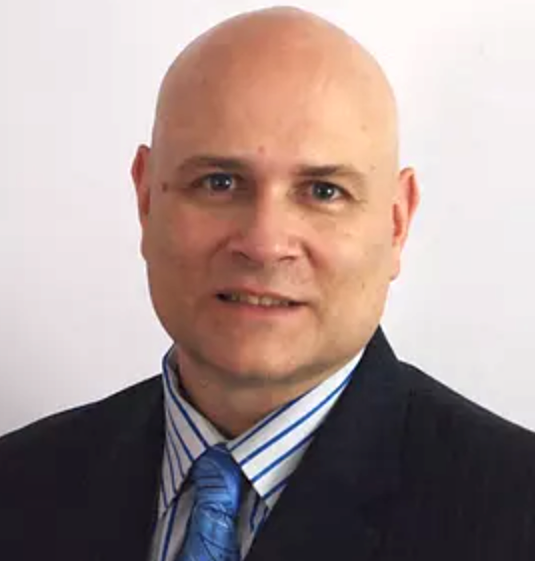How to Use the Reflective Pause in Clinical Simulation Debriefing to Maximize Learner Engagement
Timothy C. Clapper. PhD, Director of Education and Assistant Professor of Education in Pediatrics at Weill Cornell Medicine NewYork-Presbyterian Simulation Program & Center shares here about his recent research with Kim Leighton, PhD, RN, entitled “Incorporating the Reflective Pause in Simulation: A Practical Guide” recently published in The Journal of Continuing Education in Nursing. Dr. Clapper’s summary of this original article provides an overview of the reflective pause, an important yet relatively unknown concept in the medical simulation -based education lexicon. The “Reflective Pause” is as powerful tool for any healthcare professional who understands that debriefing is largely where the learning takes place in clinical simulation. Much like using the force for a Jedi!
Many educators are aware of the importance of the debriefing following a simulation or gaming event, but fewer may be aware of another useful learning strategy that may be even more essential, and can enhance the debriefing process. The reflective pause is a deliberate pause during any portion of the learning experience used to facilitate immediate reflection. The facilitator plans the pause ahead of time or enacts it after observing (or not observing) a number of critical behaviors.
The reflective pause facilitates the metacognitive process related to current thinking and behaviors. During an experience, we can see behaviors, but we cannot “see” the reasons for the behaviors unless we ask the learners to describe their understanding. Reflect on the importance of this concept. During a case, all learners may be capable of achieving high standards of performance in several clinical tasks. The question is do they succeed in the tasks intentionally? In addition, do learners understand the full ramifications or justification for their decisions or use of certain skills during a case?
Sponsored Content:
As with most tasks in our daily lives, we know that learners are very likely reflecting on their actions during a clinical case (“Okay, I did this…, but now I must complete this step or I will not have confirmation of placement of this device“). Waiting until the end of the simulation can create dilemmas, including the possibility of not addressing shortcomings in performance that can lead to “confident incompetents” leaving the learning environment and practicing in patient areas. Since the majority of medical errors reported in the research literature are attributed to errors of omission and errors of commission (Clapper & Ching, 2020), it is clear that educators must assess thinking and performance earlier and throughout the learning experience to ascertain whether or not the learner truly understands the concepts and can apply the behaviors appropriately.
During a reflective pause, feedback is provided and self-correction is supported. Deficiencies and misunderstandings are addressed immediately. Equally important, high performance is reinforced (“we talked about the importance of starting chest compressions early. Upon recognizing a pulseless patient, I observed that you started compressions in 8 seconds. Nicely done. As a leader, you also directly assigned roles and tasks. But how did you and others know if a team member completed that particular task?”).
Learners continue performing in the case and have an opportunity to demonstrate the ideal or desired behaviors consistently. This may differ from the debriefing following a case where a learner may share that they are aware of a deficiency in performance and state that they will rectify it during subsequent cases. Since “simulation re-do or do-overs” do not occur as often as they should, this practice can create problems because many learners may not have an opportunity to demonstrate that they actually can and will adjust their behaviors to the higher standard of performance.
The reflective pause facilitates the reflection-in-action process that is a natural part of learning. Educators should know that the two things needed for learning to occur includes an experience and a reflection-in-action process. We should also know that in line with Constructivism, learners continually compare new knowledge with their existing ways of knowing. The reflective pause allows facilitators to assist learners with that process while ensuring that they maintain an accurate understanding of the content as it is being applied and learned. That is, we allow learners time to stop and think about their current thinking, a metacognitive process.
Sponsored Content:
Somewhere right now someone reading this article will say to himself or herself, “sure, this sounds good, but we were told not to stop a simulation for any reason because learners may not re-engage.” Currently there is not any scientific evidence that supports that position. There is however, some evidence that suggests that learners can indeed re-engage and that has been my experience with thousands of simulations where a reflective pause was applied (see Clapper & Leighton, 2020 referenced below for more on this subject).
This past weekend, I was teaching two teenagers how to ski. I observed a paid ski instructor teaching at the same time as me. We both taught our learners the basic skills on gentle ground below the ski slopes. The difference is what occurred next. The other instructor told her learners that the session was finished and set them free for an experience on the basic (easy) slope. Alternatively, I instructed my learners to follow me up to the basic ski slope. While we were riding the ski lift, we observed one of the other instructor’s learners gliding down the slope in a perfect wedge ski position. However, the slope was much steeper than he learned on and he did not appear to know how to break accordingly or move out of the fall line with the use of turns to check or control his speed. I could hear people at the bottom of the run screaming to get out of his way. I felt bad for him and it was comforting to know that he did not crash into anything or anyone and eventually fell over uninjured in an open area.
At the top of the slope, I emphasized some teaching points to my learners. I asked them to follow me down the first knoll, a relatively gentle decline, and I modelled the practice of breaking more aggressively to accommodate the steeper slope that would be ahead of them and breaking the fall line with the use of turns. I waited for them at the bottom of this knoll and analyzed their movements, also checking their understanding of the concepts. I allowed them to continue down the slope. We paused again to reflect on their performance, and I complimented them on being able to ski under control (even around the multiple bodies that littered the ski slope). After a couple of runs, I debriefed their performance at the bottom of the slope and from our discussion it was clear to me they were surely on the right track toward becoming comfortable with the basics.
Too often in clinical simulation, we see some similarities as with the situation I described with the young man on the ski slope. If he had not fallen at the end of the run and we had only observed his great form coming down the slope we might debrief him and ask him what he could have done to control his speed better on this steeper slope. As in a clinical simulation debriefing, he may provide the right response, or we might help him discover the correct one (“check my speed by breaking and turning more often to break the fall line”). We might conclude the session and trust that he will change his behaviors.
We may also leave him with a false confidence that he can handle that slope along with more difficult ones. I encourage educators to read the full, original article on the reflective pause written my co-author, Dr. Kim Leighton and me (2020) via the link below.
In that article, simulationists will learn about the three important coaching styles described by Donald Schön that facilitate reflection. Readers will also learn about ways that the reflective pause has been used to improve the clinical learning experience in a number of settings. Make the article part of your education program’s reading library and add the reflective pause to your educator tool belt.
References:
- Clapper T. C., & Leighton K. (2020). Incorporating the reflective pause in simulation: A practical guide. Journal of Continuing Education in Nursing, 51(1) 32-38. doi: 10.3928/00220124-20191217-07
- Clapper, T. C., & Ching, K. (2020). Debunking the myth that the majority of medical errors are attributed to communication. Medical Education, 54(1), 74-81. doi: 10.1111/medu.13821
Read Dr. Clapper’s Full Reflective Pause Article Here!
Have a story to share with the global healthcare simulation community? Submit your simulation news and resources here!
Timothy C. Clapper, PhD, is an educator-researcher with proven mastery for creating and facilitating differentiated lesson plans. He authored many popular and well-cited, academic publications oriented toward advanced learning, best-practices in clinical performance, teamwork, and retention and transfer in learning. He has also turned around programs in academia, assisted educators with improving their craft, started a new $10M multidisciplinary simulation center, reorganized a major nursing simulation center for efficiency, and developed healthcare simulation fellowship programs.
Sponsored Content:





















